
Overall winner of the photography categories and Animal Portraits winner: Black rhino, Zambia. Photo by: Will Burrard-Lucas.
Two big—and endangered—mammals took 2014’s top prizes in the world’s biggest camera trap photo contest: a black rhino and a Asiatic cheetah. The gorgeous shot of a black rhino at night in Zambia photo won the overall photo competition, while the image of a super-rare Asiatic cheetah in Iran took the top research prize.
“After talking to researchers and photographers, we decided to overhaul the competition,” said BBC Wildlife editor Matt Swaine, which holds the BBC Wildlife Magazine’s Camera-Trap Photo of the Year competition. “We wanted to offer two separate awards: one for the most striking photograph, and another for the image that had done the most to advance our understanding of a species. The entries surpassed expectation.”
The contest had 877 entries from around the world, including incredible photos of a giant armadillo baby and a stirring shot of the elusive tropical bovine, the banteng among many other winners.
While the contest awards artistic merit, it also has several categories under research discoveries, such as new ranges for wildlife and unknown animal behavior. For example, the photos of giant armadillo baby have proven that juvenile armadillos stay with their mothers far longer than expected.
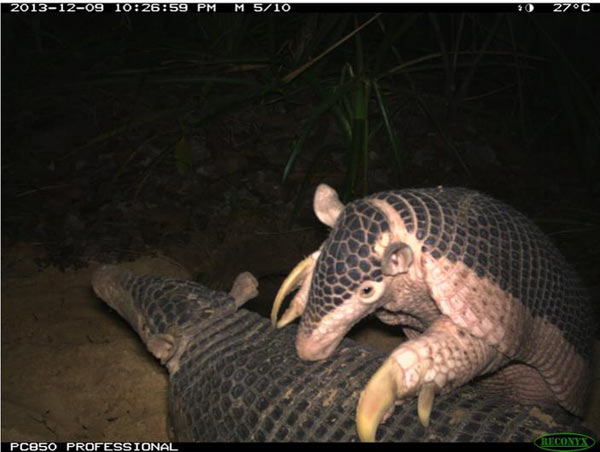
New Behaviour runner-up: baby giant armadillo playing, Brazilian Pantanal. Photo by © Arnaud Desbiez/Pantanal Giant Armadillo Project.
“It was believed that young giant armadillos disperse from their mothers at 6 weeks of age. This an estimate based on research from other species. It has been 17 months now since Alex was born and he continues interacting and sharing his mother’s territory. Although he forages alone, he uses burrows that she digs and only recently began digging a few burrows,” Arnaud Desbiez, an expert on giant armadillos who took the photo, wrote in a recent email update of the Giant Armadillo Project. “This new information is extremely important and demonstrates how rare, and how much care each baby giant armadillo requires. Females therefore produce very few young and each animal is extremely precious. This explains why giant armadillos have gone locally extinct in so many areas throughout their range. Too few young are born and the removal of any individual has huge consequences on the population.”
In recent years, camera traps have become a ubiquitous tool for scientists and conservationists, especially for those studying rare or elusive animals like Desbiez. These remote cameras have allowed researchers to more accurately track animal populations, locate nearly-extinct species, and even find some bizarre unheard of behavior such as the recent discovery of small carnivorous mammals, genets, riding on the backs of African buffalo and rhino.
This is the fifth year of the BBC Wildlife Magazine’s Camera-Trap Photo of the Year competition and every year sees more entires. So, camera trappers be ready to position your cameras carefully for 2015!
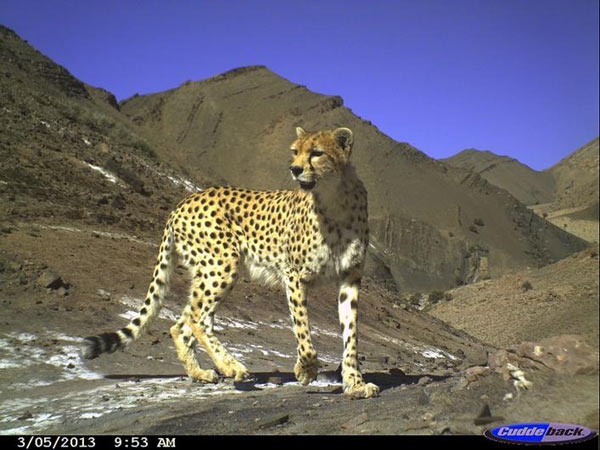
Overall winner of the research categories and Rare Species winner: Asiatic cheetah, Naybandan Wildlife Refuge, Iran. As winner of the overall research award, the photo of the Asiatic cheetah in the Naybandan Wildlife Refuge in Iran took home 3,000 pounds (around $4,700). Photo by: © Iranian Cheetah Society (ICS)/Iranian Department of Environment/Conservation of Asiatic Cheetah Project/Panthera.

Rare species commended: African golden cat, Ivindo National Park, Gabon. Photo by: © Laila Bahaa-el-din/Panthera/WildCRU/University of KwaZulu-Natal.
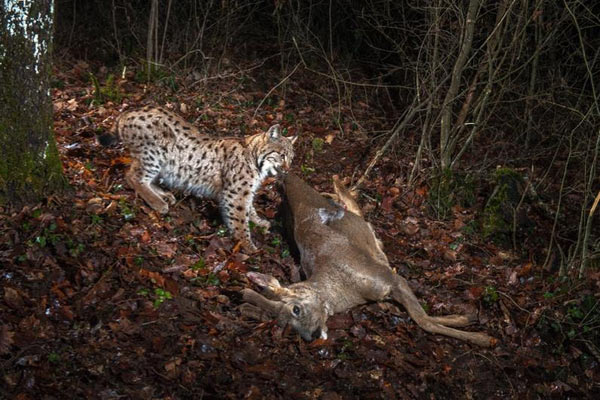
Animal Behaviour winner: European lynx and roe deer, Jura Mountains, Switzerland. Photo by: © Laurent Geslin.
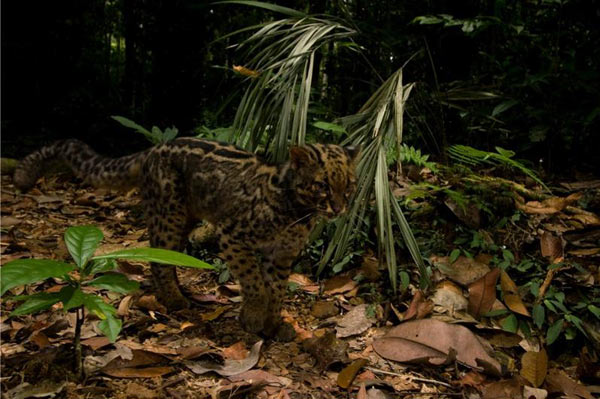
Rare Species runner-up: Marbled cat, Malaysian Borneo. Photo by: © Sebastian Kennerknecht/Panthera.
Related articles
With drones, satellites, and camera traps proliferating, conservation needs better networking
(10/27/2014) With scientists rapidly adopting and using a range of remote sensing tools for monitoring environmental change, tracking wildlife and measuring biological processes, conservation needs to scale up networking capabilities to maximize the potential of this technological revolution, argues a commentary published in the journal Science.
Saving Asia’s other endangered cats (photos)
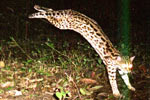
(10/21/2014) It’s no secret that when it comes to the wild cats of Asia—and, really, cats in general—tigers get all the press. In fact, tigers—down to an estimated 3,200 individuals—arguably dominate conservation across Asia. But as magnificent, grand, and endangered as the tigers are, there are a number of other felines in the region that are much less studied—and may be just as imperiled.
Camera traps capture ‘fantastically bizarre’ animal behavior in South African park

(09/17/2014) Cowbirds ride cattle to pick off their parasites; egrets pal around with wildebeest and eat the small creatures disturbed by their grazing. But mammals riding other mammals is something long-thought pretty much isolated to humans and their domestic creatures. Then, earlier this month, a camera trap in a park in South Africa captured something that contradicts this assumption: a genet riding around on giant herbivores.
Unreal Thailand: stunning wildlife photographed in flooded Khlong Saeng Wildlife Sanctuary
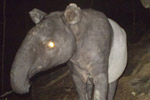
(08/13/2014) If someone told you there was a place where 200 million year old coral reefs had erupted from beneath the sea and were now draped in the oldest rain forest in the world, a place where marbled cats and clouded leopards prowl the sharp crags and their dark caves in search of dead bats and small prey, would you believe them?